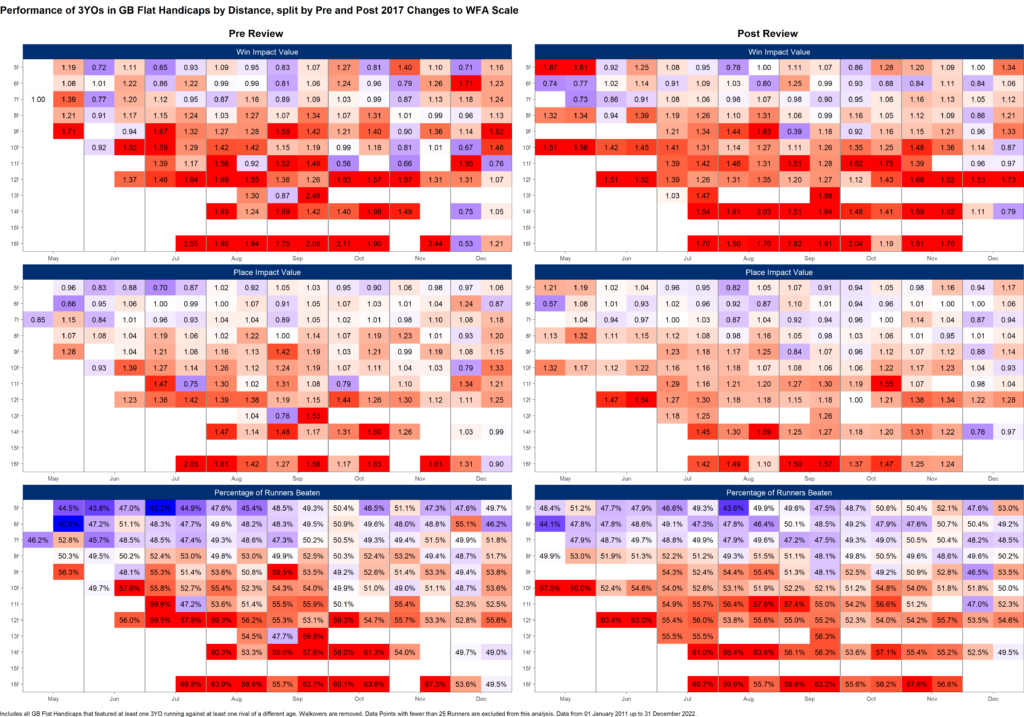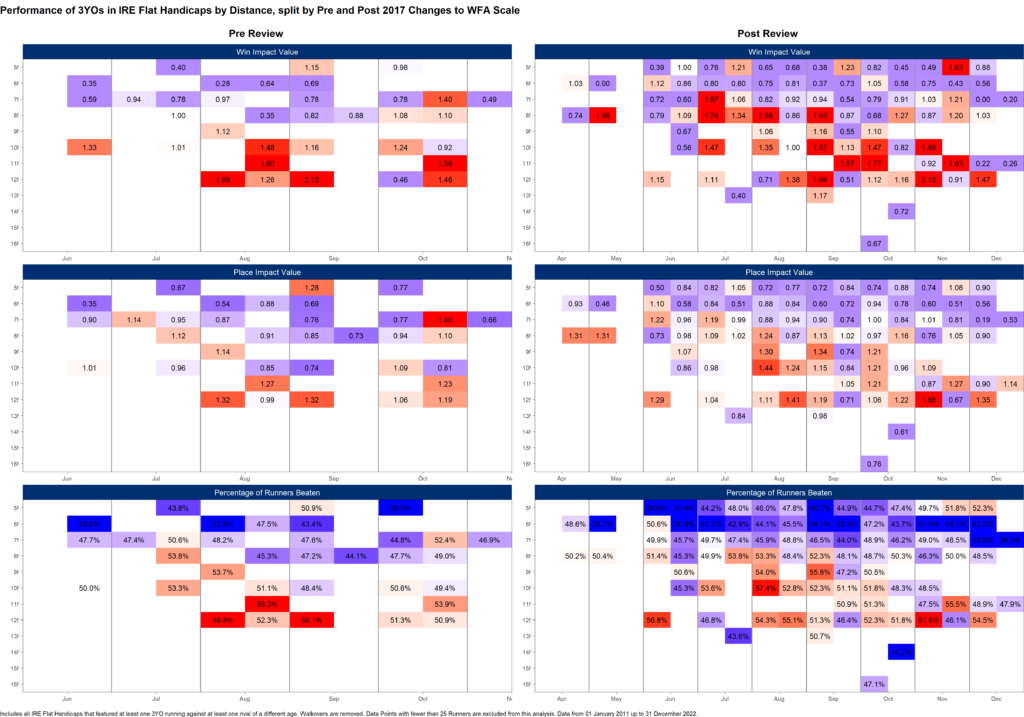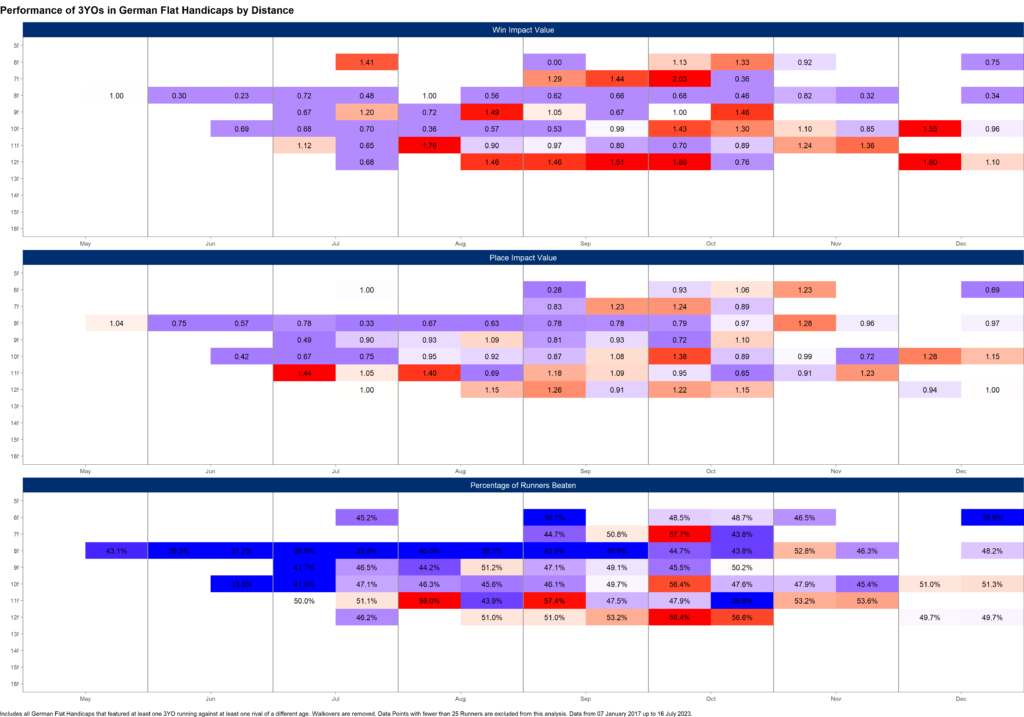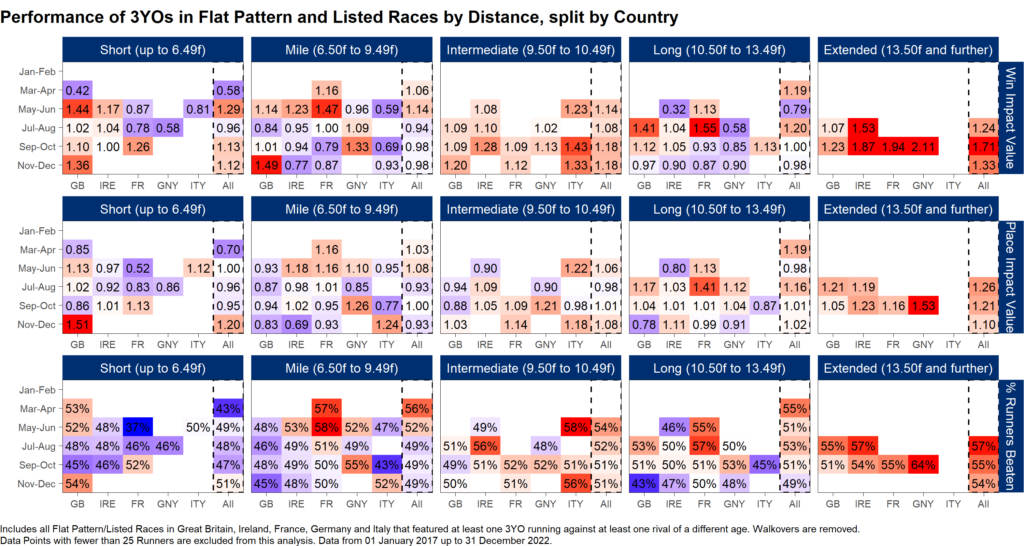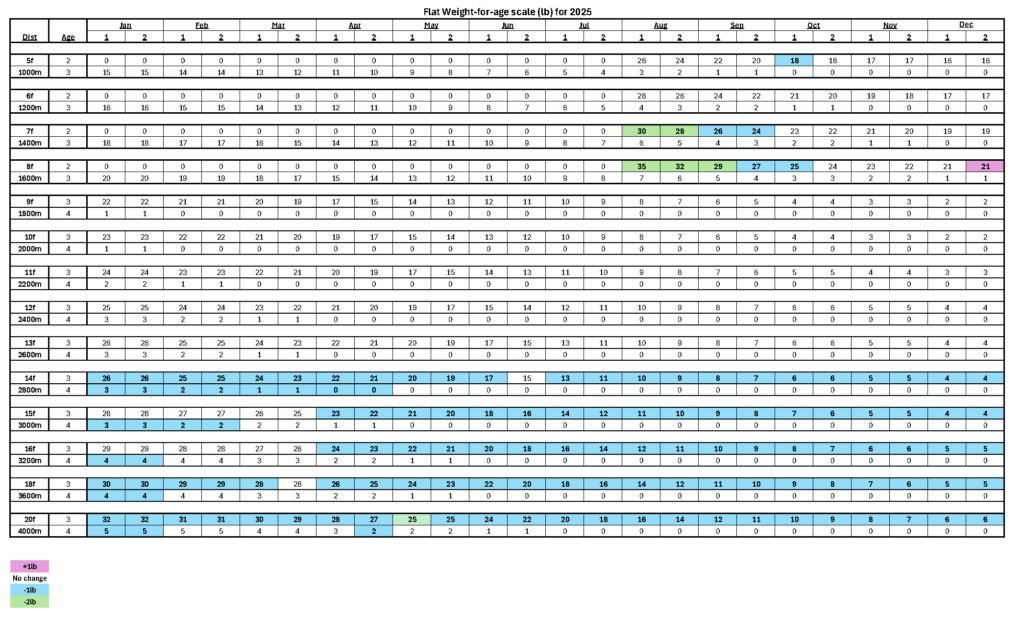By Dominic Gardiner-Hill, BHA Head of Handicap
Those interested in the subject will recall that my predecessor as BHA head of handicapping, Phil Smith, conducted a review of the Flat Weight-For-Age (WFA) Scale in 2016 – its recommendations in 2016 were implemented in 2017.
In August 2023 the European Pattern Committee asked me to lead a work that:
a) Review the effectiveness of the revised scale adopted in 2017, where possible, and recommend further changes based on updated data analysis.
b) Unification of the WFA scales used across Europe – creating both imperial and metric versions of the agreed scale.
In the following blog I will highlight examples of the analysis that proved crucial to the project, explain the process undertaken, the conclusions drawn and the final recommendations.
analysis
This section presents the relevant analysis in the following order:
– BHA explanation of the analysis methods used
– Data from all age disability assessments conducted in the UK, Ireland and Germany
– Data from Black Type races of all ages in Great Britain, Ireland, France, Germany and Italy.
Analytical methods
WinIV
Gain impact value: compares the number of winners achieved with the number that would be expected by chance. This metric assumes that all horses in a race have an equal chance; For example, in a race with five participants, each horse would be expected to win 20% of the time.
Par is 1.00, where the number of winners is equal to the number of winners expected by chance. So if a WinIV of 1.50 is achieved, 50% more races will be won compared to random chance. In contrast, a WinIV of 0.50% suggests that 50% fewer races are won in comparison.
PlcIV
Place impact value: is similar to WinIV in that it compares the number of horses placed with the number expected by chance; For example, in a race with eight runners, each horse would be expected to place three-eighths of the time.
Here too, par is 1.00 – a PlvIV of 1.50 suggests that 50% more places will be achieved compared to chance and so on.
PRB
Percentage of runners beaten: The average percentage of runners beaten in the sample. A horse that places 2nd in a race with 11 runners has beaten 9 of its 10 competitors (90%), then the average of all runners in the sample is taken. The ideal number should be as close to 50% as possible.
Non-completions are assumed to have completed the last races, i.e. 0.00%, while any overruns or invalid races are removed from the analysis.
Heat maps
In the “Heatmap” tables below, the areas highlighted in white are those that achieve or are close to ideal results.
Shaded blue are those that produce results that are below the ideal – the darker the shade, the further away it is.
The red shaded points are those that lie above the idea – the darker the shade, the greater the overachievement compared to chance.
Handicap data
Great Britain
Ireland
Germany
European black type and list data
It is clear to see that the 2017 changes have had minimal impact on the overperformance of 3-year-olds in the UK handicaps, particularly in the 13-year-olds+, while they also continue to have an impact in the 10-12 year-olds with handicaps of all ages regularly deliver above-average performance.
Although they overperform in various places at 10f+ in Ireland, the problem is nowhere near as pronounced as in the UK, while in Germany there is a clear overperformance of 3-year-olds at 12f+ handicaps between mid-August and mid-October.
Interestingly, however, data from muster and listed races conducted in the UK, Ireland, France, Germany and Italy during the same period tell a slightly different story.
The measured values in all distance categories up to 13.49 f are as close to the ideal as possible, but once again underline the superior performance of 3-year-olds in races in the extended distance category (13.5 f+). So I decided that the only area that needed to be “optimized” and brought into better harmony this time was the endurance racing.
With this in mind, I then had to decide whether these changes should be based on the data provided by domestic handicappers or by pattern and listed races in the five major racing areas across Europe.
I chose the latter for the following reasons:
– The review was carried out at the request of the European Model Committee, whose primary aim was not only to review the performance of the current scale, but to standardize the scales across Europe.
– In the UK in particular, adjustments based on disability type could potentially be so enormous that they impact the balance of disability in other countries – essentially, what would work in the UK may not work elsewhere.
– Adjustments based on national handicap form could potentially shift the advantage to older horses in Pattern and Listed races rather than bringing about greater parity.
– To achieve greater equality in handicaps, domestic disabled people do not need to rely solely on the WFA scale – their own methodology can be used to balance the situation.
– As noted above, the pattern and list racing metrics are largely satisfactory for all distance categories except the long distance events – any changes to the national handicap form could potentially change the dynamics in these areas.
All of Europe's major racing jurisdictions are represented on the European Pattern Committee and by 2024 I have presented several options for changes to the current scale – as expected, minor compromises had to be made throughout the process, with the countries represented having a say in both the extent of the changes their timing. A final version was approved at the EPC meeting in August 2024 for implementation in 2025.
Throughout the entire process I drew on the expertise of experienced flat handicappers from Ireland, France and Germany. In addition to approval by the EPC, each jurisdiction will have submitted the revised scale to their various domestic racing and stakeholder committees for rubber stamping.
The table below is the agreed, updated version of the UK WFA scale, with color coded representations of the changes made. A kilogram conversion has been agreed upon for these metric jurisdictions across Europe.



